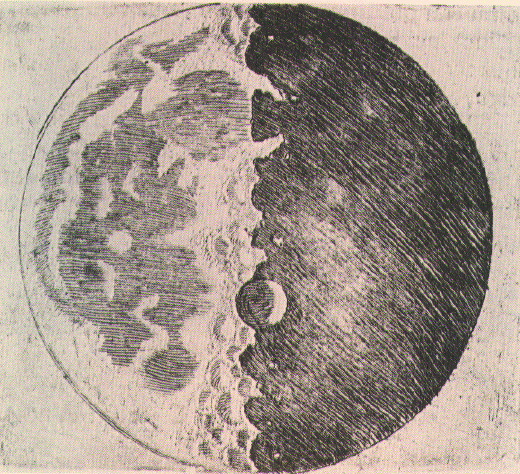

Drawings of the moon as seen with Galileo's telescope. By his own account, Galileo first observed the Moon on November 30 1609. Comparing patterns of light and shadow in the vicinity of the terminator (dividing line between light and shadow) at first and third quarter, Galileo could argue convincingly that there exists mountains and valleys on the lunar surface. Aristotelian doctrine stipulated that celestial bodies were perfectly smooth and spherical. Drawing reproduced from Galileo's 1610 Sidereus Nuncius
The first telescopic observations of the Moon on record were carried out by the englishman Thomas Harriot (ca. 1560-1621), on the evening of July 26 1609. However, based on his extant correspondence as well as entries in his notebooks, as in the case of sunspots Harriot did not appear to have drawn any particular physical significance from what he saw.
Whitaker, E.A. 1978, Journal for the History of Astronomy , 9 , 155-169
-Written and last revised 20 December 1997 by paulchar@ucar.edu.